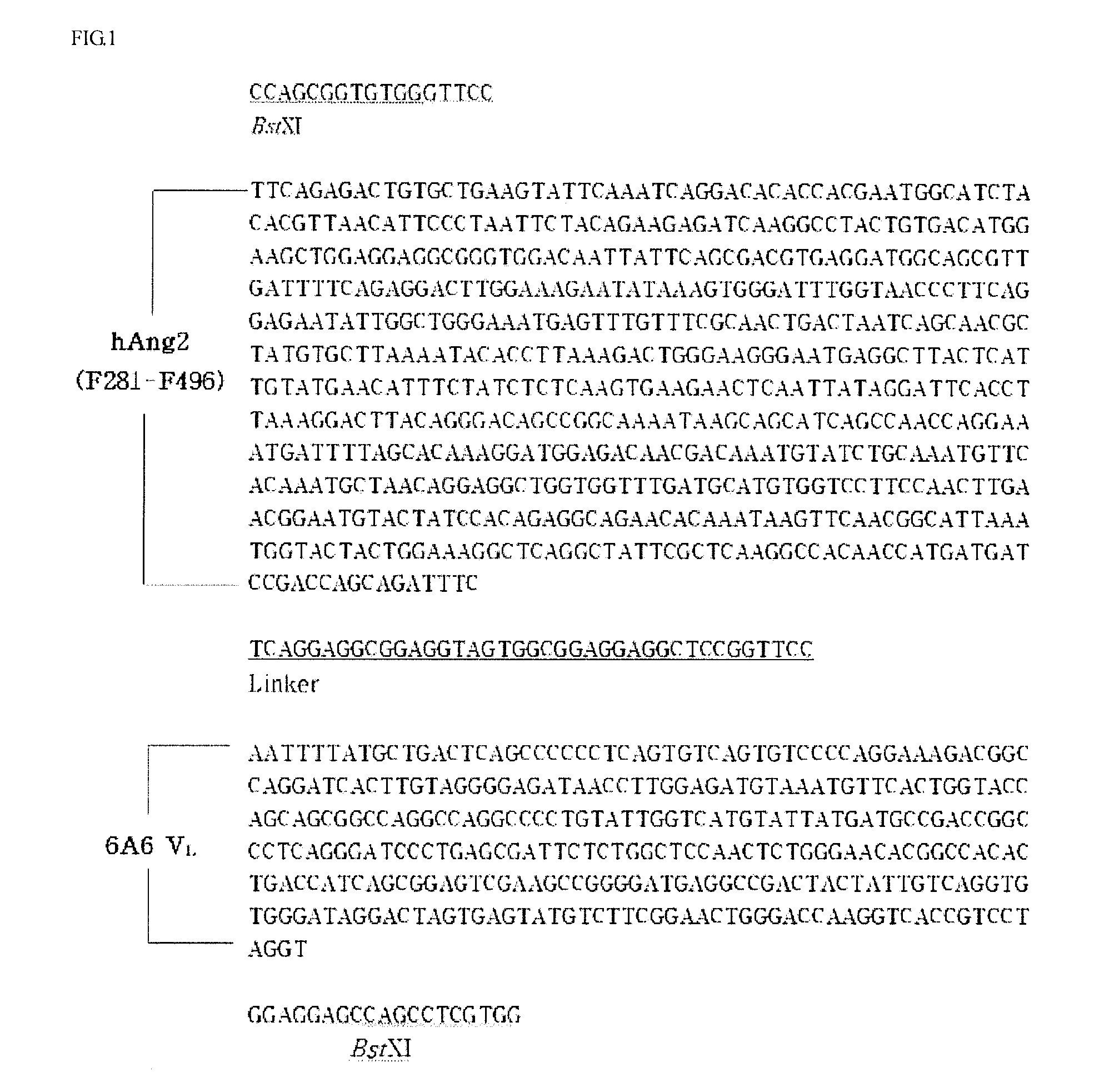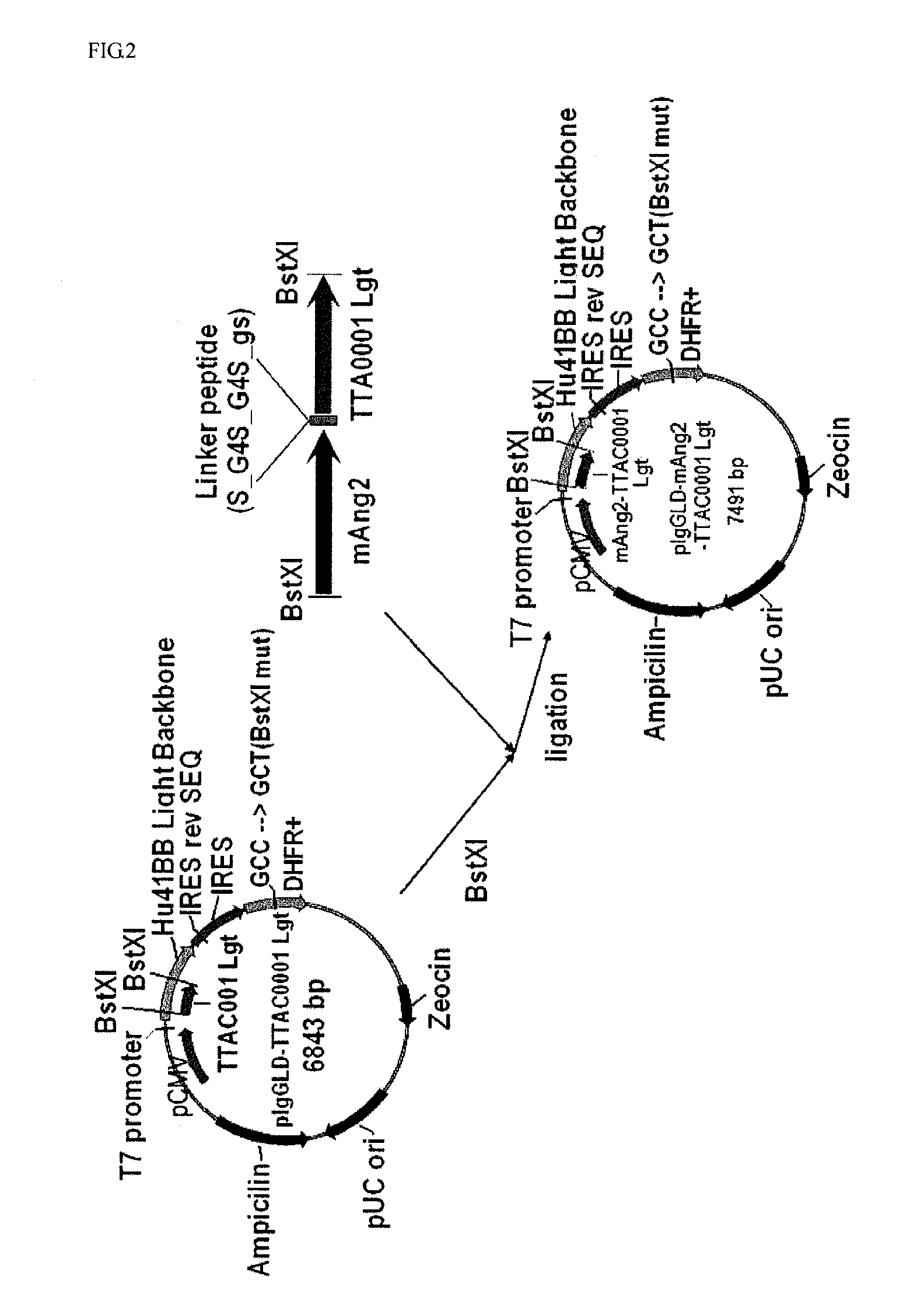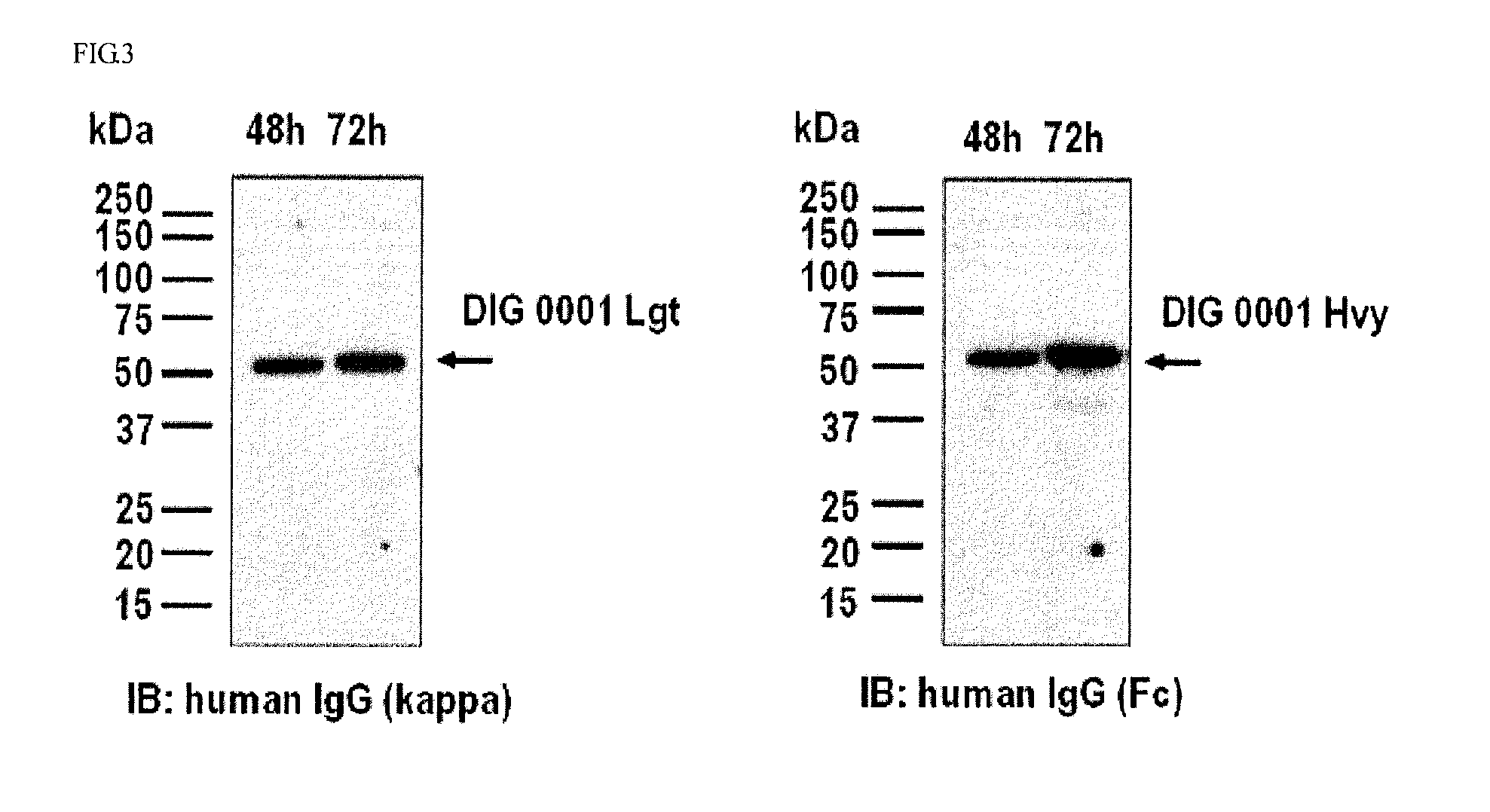Dual targeting antibody of novel form, and use thereof
a novel form, dual targeting technology, applied in the direction of peptides, drug compositions, injected cells, etc., can solve the problems of poor stability of antibodies, low productivity of antibodies, and the inability of antibodies to exclude human anti-mouse antibodies (hama) or human anti-rat antibodies (hara) reactions caused by repeated administration, etc., to achieve the effect of inhibiting angiogenesis, effective inhibiting angiogenesis, and excellent neutralization potential
- Summary
- Abstract
- Description
- Claims
- Application Information
AI Technical Summary
Benefits of technology
Problems solved by technology
Method used
Image
Examples
example 1
Construction of Expression Vector for Producing DIG 0001
[0075]A binding domain-related DNA of Ang2 binding to Tie-2 was amplified through PCR. For this purpose, a HEK293 cell line producing human Ang2-RBD (Barton et al., Structure, 13:825, 2005) was kindly provided from Dr. Dimitar B. Nikolov at the Memorial Sloan-Kettering Cancer Center in USA, and the genomic DNA was extracted, which was used as a template. In order to amplify only an Ang2 binding domain (F281-F496) from the extracted DNA, PCR was performed under the following conditions: One cycle at 94° C. for 4 minutes, 30 cycles (at 94° C. for 45 seconds / at 50° C. for 45 seconds / at 72° C. for 1 minute), one cycle at 72° C. for 7 minutes, and 4° C. for ∞. The composition of reactants used herein were as follows: 2 μl (10 pmole / μl) of a primer F-ksw001 having a BstXI restriction enzyme recognition site (5′-CAC TCC AGC GGT GTG GGT TCC TTC AGA GAC TGT GCT GAA GTA TTC, SEQ ID NO: 1), 2 μl (10 pmole / μl) of a reverse primer R′-ksw001...
example 2
Production and Identification of DIG 0001
[0079]The constructed light chain expression vector pIgGLD-mAng2-TTAC0001 Lgt and the pre-existing heavy chain expression vector pIgGHD-TTAC0001 Hvy (PCT / KR07 / 003,077) was co-transduced into CHO-DG44 (dhfr-deficeint CHO) cells to induce its voluntary expression, and the expression was confirmed using SDS-PAGE and western blotting. The transduction was conducted using Lipofectamine™ 2000 (Invitrogen #11668-019, USA), and its procedure was performed according to the manufacturer's instructions. In sum, 5×105 CHO-DG44 cells were inoculated into each well of a 6-well plate containing an αMEM medium (Welgene, Korea), and densely incubated until a cell density reached approximately 80 to 90% by keeping the CHO-DG44 cells at 37° C. for 24 hours in a CO2 (5%) incubator with moisture. 3 μg of a recombinant vector (1.5 μg of pIgGHD-TTAC0001 Hvy and 1.5 μg of pIgGLD-mAng2-TTAC0001 Lgt) and 6 μl of Lipofectamin™ 2000 were diluted in each 250 μl of serum-...
example 3
Establishment of Cell Line For Producing Dig 0001 and Separation and Purification of Antibody
[0080]A DIG 0001-producing cell line was established using CHO-DG44 (dhfr-deficeint CHO) cells. A transduction procedure for establishing a recombinant antibody-expressing CHO-DG44 cell line was conducted in the same manner as is described above. In order to screen the transduced CHO-DG44 cells (dhfr-positive), a hypoxanthine-thymidine-free αMEM medium was used, and 500 μg / ml of G418 (Sigma-aldrich, USA) and 400 μg / ml of zeocine (Invitrogen, USA) were used as selection markers to primarily screen the transduced CHO-DG44 cells. In order to obtain a monoclonal colony in which the recombinant antibody was expressed, the primarily screened cells were diluted to a density of 10 cells / ml, and inoculated in a 96-well plate (Nunc, USA). Then, the diluted cells were incubated for 2 weeks, and a single colony differentiating from a single cell was separated to establish a mother cell clone. In order t...
PUM
| Property | Measurement | Unit |
|---|---|---|
| Solubility (mass) | aaaaa | aaaaa |
Abstract
Description
Claims
Application Information
 Login to View More
Login to View More - R&D
- Intellectual Property
- Life Sciences
- Materials
- Tech Scout
- Unparalleled Data Quality
- Higher Quality Content
- 60% Fewer Hallucinations
Browse by: Latest US Patents, China's latest patents, Technical Efficacy Thesaurus, Application Domain, Technology Topic, Popular Technical Reports.
© 2025 PatSnap. All rights reserved.Legal|Privacy policy|Modern Slavery Act Transparency Statement|Sitemap|About US| Contact US: help@patsnap.com



